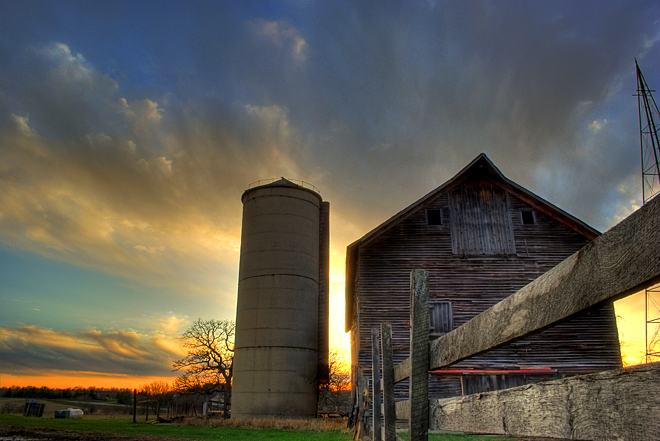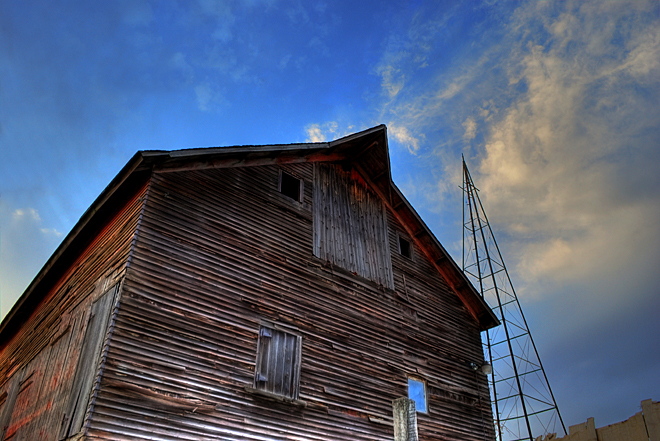
One of the perks of living on the northwestern/western edge of the Chicago suburbs is that I’m never very far from open land and farms. My wife and I were heading back home from our recent trip to Tennessee when I noticed a nice sunset developing. At the time we were about 4 miles west of Geneva, Illinois driving through a developed area of retail stores. We turned west on a state highway and headed for open space.
We’ve chased sunrises and sunsets before and learned that once you are clear of suburbia, you need to turn perpendicular to the sun (head north or south) as quickly as possible in order to find something of interest to frame against the sky. Driving toward the sun just doesn't work unless you want a picture of a road and the sun.
I determined to take the first road that allowed a turn north of the highway we were on and see what turned up. What turned up was a 1840s vintage barn and farmstead. We had stumbled onto the Garfield Farm Inn and Museum located west of Geneva, Illinois.
Timothy Garfield and his family built a brick inn on the family farm in 1846, which became a center for community activity. The inn hosted hundreds of teamsters and travelers, served as a ballroom for 4th of July dances, a meeting place, and a place to drop in for good company and a mug of cider.
Three original buildings -- the 1842 hay and grain barn, the 1849 horse barn and the 1846 inn -- survive along with three barns built between 1860 and 1906. The farm is listed on the National Register of Historic Sites.

We arrived just as the site was closing for the day, but a worker graciously allowed me to take some photos of the sky behind the barn and other buildings. I took a number of shots of the barn with the sun setting behind it, bracketing my exposures and blending them together in a software program called Photomatix Pro (available as a free download and a $99 upgrade). The result is a high dynamic range (HDR) image that captures a much fuller range of tones than a single digital image, coming close to what the human eye can distinguish in a scene.
The site is extremely picturesque and we’re definitely heading back sometime for more photos. On purpose.
Photograph © 2009 James Jordan.




No comments:
Post a Comment